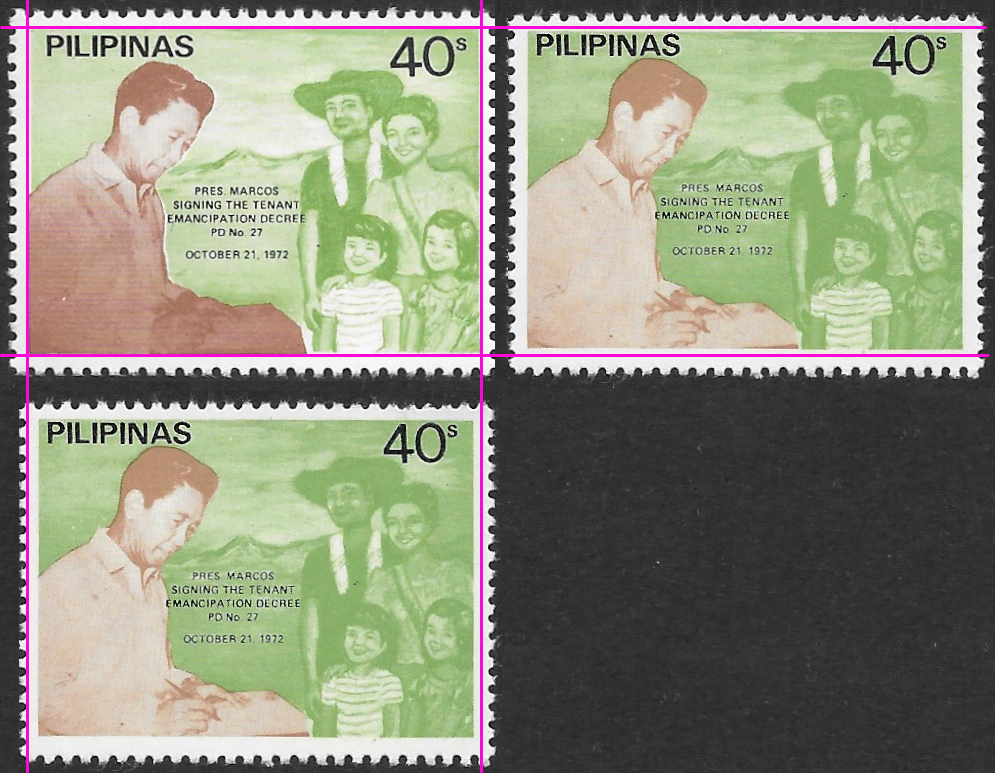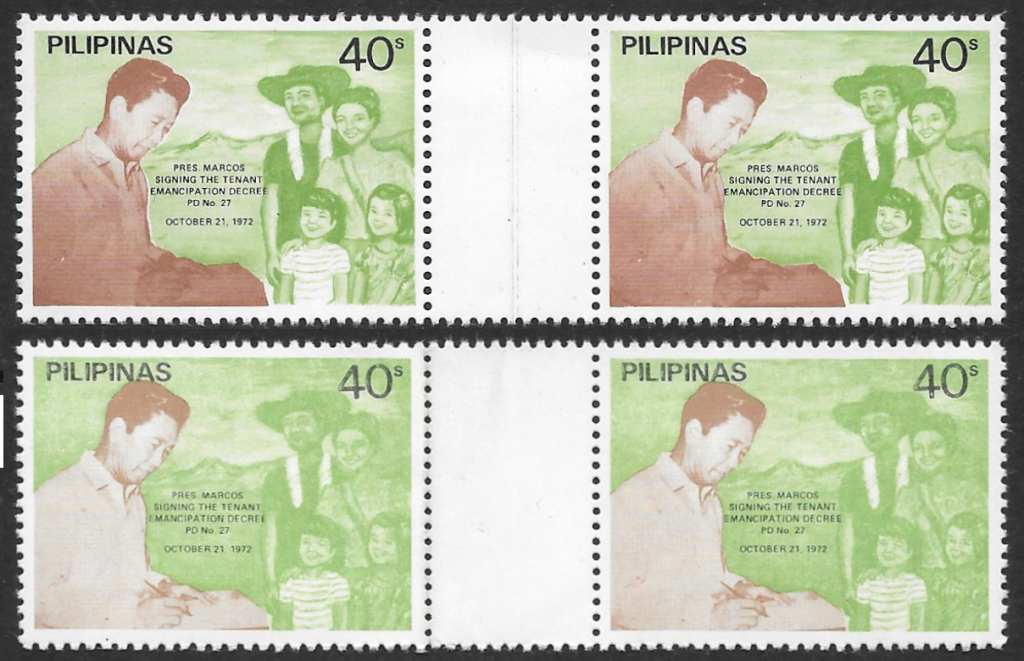Marcos Signs Tenant Farmers Emancipation Decree
1982 saw the release of Scott # PH 1605 to commemorate the 10th anniversary of the Tenant Farmers Emancipation Decree. The stamp depicts then President Ferdinand Marcos signing Presidential Decree No. 27 on 21st October 1972 (while under a state of Marshall Law). The essence of the decree was to eventually grant land ownership through 15 year loans to tenant farmers; though restricted to rice and corn farms only. This was a massive overhaul of land ownership in the Philippines and a hot political topic for the country.
The actual decree opens with the following lines:
In as much as the old concept of land ownership by a few has spawned valid and legitimate grievances that gave rise to violent conflict and social tension,
The redress of such legitimate grievances being one of the fundamental objectives of the New Society,
Since Reformation must start with the emancipation of the tiller of the soil from his bondage,
NOW, THEREFORE, I, FERDINAND E. MARCOS, President of the Philippines, by virtue of the powers vested in me by the Constitution as Commander-in-Chief of all the Armed Forces of the Philippines, and pursuant to Proclamation No. 1081, dated September 21, 1972, and General Order No. 1 dated September 22, 1972, as amended do hereby decree and order the emancipation of all tenant farmers as of this day, October 21, 1972
Presidential Decree No. 27 – 21st October 1972
That’s enough of the politics! About the stamps….
A stamp with an identical design was released in 1983, though physically smaller in size. The stamps of 1982 and 1983 are easily mistakable if the collector is not measuring perforations, not measuring the actual size of the stamp, or does not have one of each for comparison. For the 1982 release there are actually 2 major varieties of this stamp – Type I and Type II. Type II was released to correct the darkness of the dominant brown color in the original stamp. It is easy to identify Type I and Type II stamps when they are side-by-side.

What is interesting is that type II actually has a smaller print area. You can see this clearly in Marcos’s shoulder (left), the girls hair and shoulder (right), and the boy and girls forearms and elbows (bottom). It looks as though roughly ¼mm has been removed from all 4 sides. It is a slight variance and one that is easy to miss.

It has also been observed that some gutter pairs have a faint print line down the center of the gutter. It initially looks like a fold line but on inspection you can see that it is actually a printed line. I’ve seen both the addition and omission of this line on both Type I and Type II stamps. I am unsure of the significance or meaning of the gutter line though.

As previously mentioned, Scott # PH 1654 was released in 1983 as a resized version of Type II described above.

The major differences between each of the stamps is laid out in this table:
| Scott # | Release Date | Stamp Size | Perforations |
|---|---|---|---|
| PH 1605 Type I (darker brown) | 21-Oct-1982 | 37 x 27 mm | comb 13 x 13¼ |
| PH 1605 Type II (lighter brown, larger border) | ??? | 37 x 27 mm | comb 13 x 13¼ |
| PH 1654 | 10-Nov-1983 | 32 x 22.5 mm | comb 13 x 13¾ |
As with all things politically motivated there are conflicting views on the success of the emancipation decree, but that was never going to be the focus of this article.
Thanks for reading, happy hunting and have fun with your collection (and good luck collecting all 3 stamps)!
